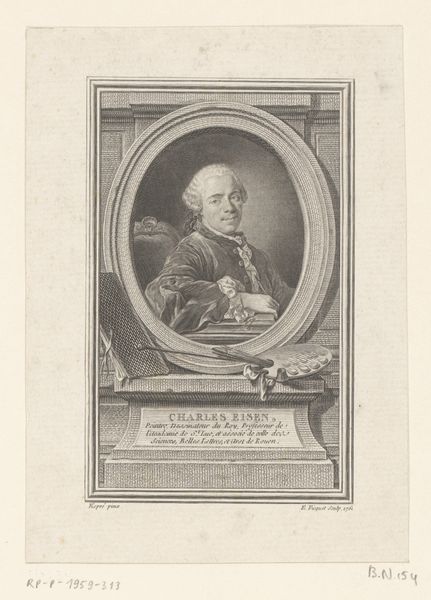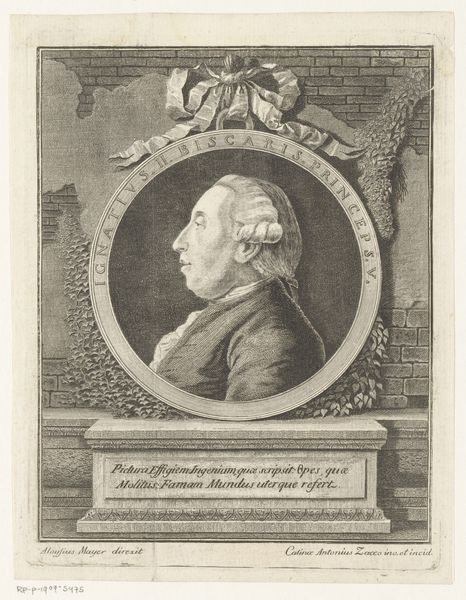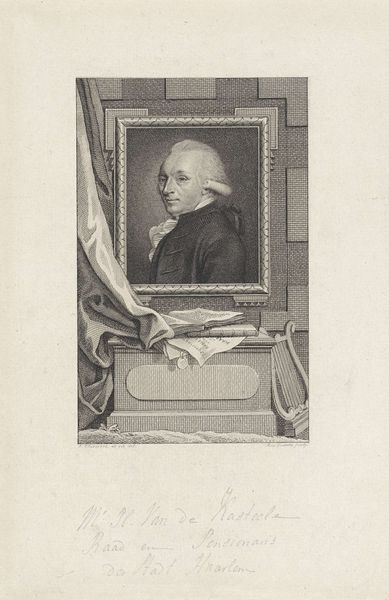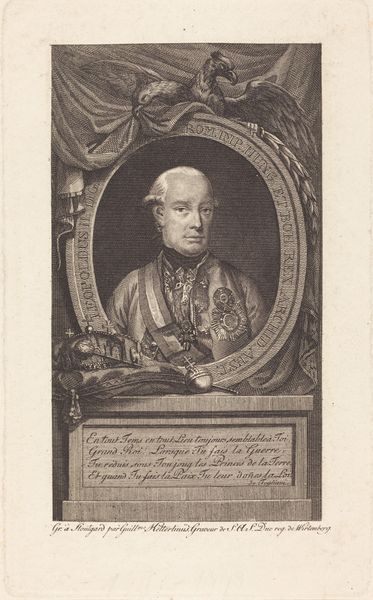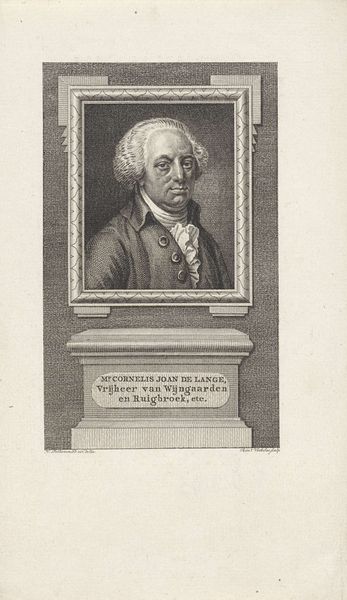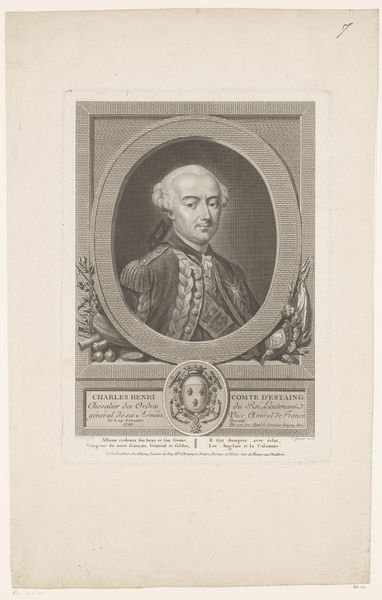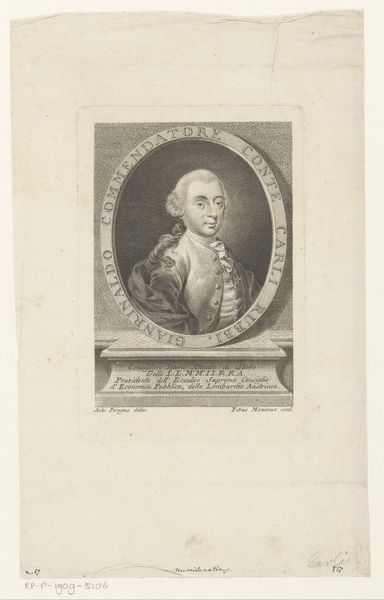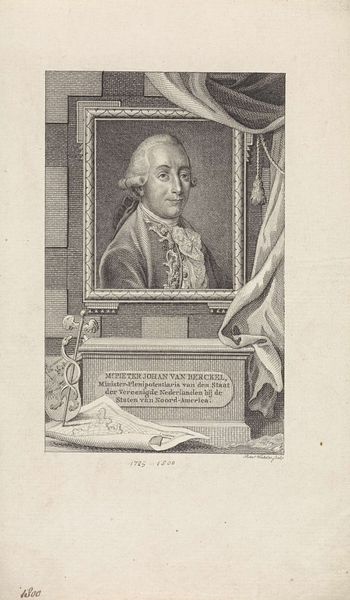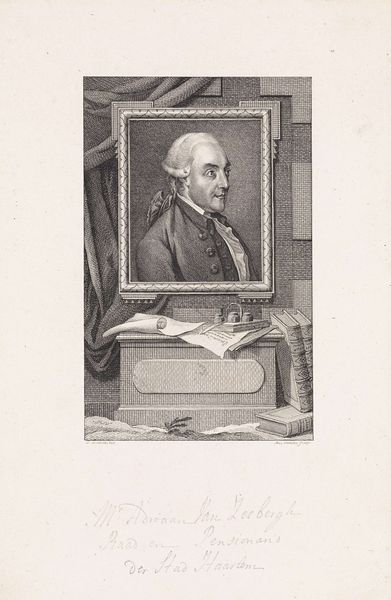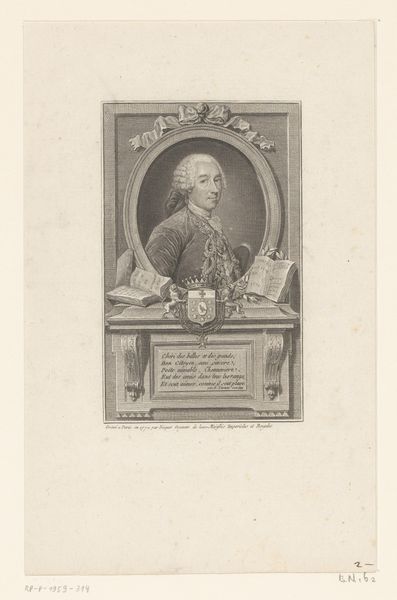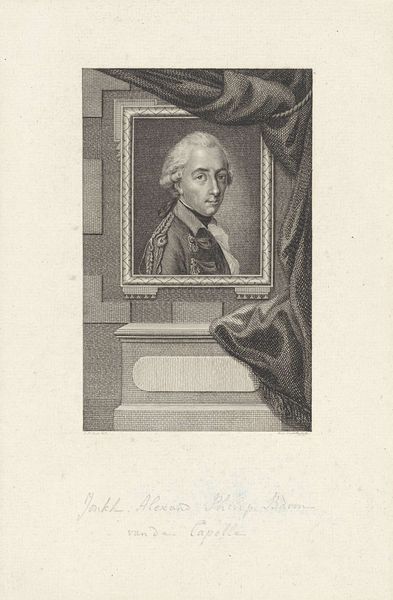
#
pencil drawn
#
aged paper
#
light pencil work
#
pencil sketch
#
old engraving style
#
sketch book
#
retro 'vintage design
#
personal sketchbook
#
sketchbook drawing
#
pencil work
Dimensions: height 183 mm, width 130 mm
Copyright: Rijks Museum: Open Domain
Editor: We’re looking at a piece called *Portret van Robert Jasper van der Capellen* by Reinier Vinkeles, created sometime between 1786 and 1809. It's currently held at the Rijksmuseum. The sketch, done with pencil on paper, has an interesting old style, very vintage, and gives an immediate sense of history and maybe some upper class, with a sort of sternness to the Baron depicted. What’s your take on it? Curator: That sternness, as you say, speaks volumes about the subject's position and the era's expectations of leadership. But look beyond the Baron himself and consider the context. What does it tell us about power, representation, and perhaps even the burgeoning revolutionary sentiments brewing in Europe at the time? How might this carefully constructed image contribute to or challenge prevailing social hierarchies? Notice the book beneath the frame; what can that tell us of Van der Capellen's education or influence in revolutionary movements, which were sometimes planned within private circles? Editor: I see your point about the context. The book indicates literacy and perhaps wealth, which in those times did certainly affect status. The detail given to the clothing and presentation could also show a kind of privilege and power which I at first hadn't questioned. What is he known for historically? Curator: Robert Jasper van der Capellen was an important figure in the Dutch Patriot movement, advocating for greater democratic participation and challenging the authority of the stadtholder. Seeing this portrait with that historical context in mind changes everything, doesn't it? He wasn't just any baron. He was a political disruptor of the establishment, for which he sacrificed a comfortable way of life to fight for ideals like liberation and equality, even as part of the privileged class. Editor: Absolutely. It’s fascinating how understanding the social and political context can shift the entire meaning of an artwork. I had not known the history beforehand. Curator: It is with this extra information we understand that images are seldom neutral. They participate in discourses, constructing and reinforcing, or contesting ideologies of its time. Editor: I will consider this with future encounters, how art acts in this exchange. Thanks so much!
Comments
No comments
Be the first to comment and join the conversation on the ultimate creative platform.
